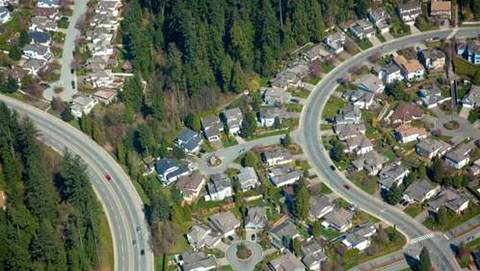TPG Telecom mass-migrated 300,000 50Mbps NBN users - one-third of its user base on the tier - up to 100Mbps services in the three months to March 31, only to move some back to 50Mbps again, in what appears to be evidence of a sophisticated NBN price modelling play.

The ACCC’s quarterly wholesale market indicators report, released last week, showed an anomalous mass-movement of customers between the 50Mbps and 100Mbps tiers.
TPG Telecom is the only major retail service provider (RSP) to experience a mass customer movement like this between 50Mbps and 100Mbps in the first six months of the year.
That immediately suggests it acted alone and on its own information, which iTnews has been able to partially confirm.
What the numbers show
A review of the ACCC numbers show that TPG’s 50Mbps user base dropped by 304,576 users in the first three months of 2022; in the same period, its 100Mbps user base grew by 311,973.
In the following three months (to the end of June), the size of the 100Mbps user base fell by 58,508, while the 50Mbps user base increased by 59,869.
The similarity between the numbers suggests that customers were being migrated in large numbers between the 50/20 and 100/20 tiers.
The question is why.
The most obvious explanation is that there was some sort of short-term NBN pricing promotion during the period that TPG was making use of.
But NBN Co has told iTnews that no such promotion existed.
Instead, an NBN Co spokesperson told iTnews that “there were some commercial advantages in regards to CVC [connectivity virtual circuit] inclusions for internet retailers for having customers on a 100/20 service compared to 50/20 and there were significant upgrades in early 2022.
“The downgrades in the last quarter [were] a reversal of some of these earlier upgrades.”
iTnews sought further clarification as to the nature of the “commercial advantages” and was told that “there was no short-term promotion" that TPG took advantage of.
“The higher CVC inclusions offered on 100/20 versus 50/20 for an additional $13 made it commercially advantageous for internet retailers to perform these upgrades," NBN Co responded.
CVC is a bandwidth charging mechanism on the NBN.
Plans come with a certain baseline amount of CVC but it is often not enough, and retailers often have to buy extra, known as overage.
However, CVC is also a pooled resource: that is, each user's allocation is added to one big pool and shared across all NBN users as needed. To an extent, lighter users 'subsidise' heavier users, though often not enough for the retailer to avoid making additional CVC purchases.
It appears in this instance - though the company won’t confirm either way - that TPG employed (and continues to employ) some sophisticated price modelling on its side that enabled it to potentially achieve a CVC windfall from NBN Co’s standard pricing and plan inclusions.
This may be the first visible instance or case study of this modelling effort in action.
Working theories
The mechanics of how this all worked remain unclear.
For example, did TPG Telecom upgrade the underlying services of a subset of its 50/20 user base to 100/20, but continue to serve those users with 50/20?
In other words, was the speed upgrade transparent or apparent to users?
It may not have been, if the goal was a price-modelled one to get at attractive CVC inclusions on 100/20 that could create a windfall of CVC that could offset bandwidth needs of more demanding users.
So one theory is that TPG found it is temporarily more economical to serve a subset of 50/20 users with a 100/20 service, while still selling it as 50/20.
If this was the case, TPG’s 50/20 customers would not lose out at all - they would still be served their regular NBN services regardless.
The movement of 60,000-odd users back from 100Mbps to 50Mbps tiers also suggests perhaps TPG tweaked its models between March and June.
The subset of customers most likely to produce a CVC windfall would be 50/20 users at the lower end of the usage spectrum (that could therefore 'subsidise' other users with their elevated amount of included CVC bandwidth if served from the 100/20 tier).
TPG may have needed to adjust its modelling if some selected users did not produce the anticipated CVC windfall.
Then there are questions about what NBN Co’s systems allow in terms of mass migration of user cohorts - algorithmically - between tiers.
After a week of questions and back-and-forth, iTnews met with a dead-end on an official explanation of the anomalous customer movements.
The impasse can perhaps be best explained as NBN Co - as the wholesaler - has limited visibility into what RSPs do; and TPG, as the potential beneficiary of some neat algorithmic work, has little commercial motivation to share its methods with iTnews.
“TPG Telecom is pleased to support our customers with the NBN services they need,” a TPG Telecom spokesperson said.
“We don’t comment on the make-up of our wholesale costs as it’s a commercial matter between us and NBN Co.”





.png&h=140&w=231&c=1&s=0) Tech in Gov 2024
Tech in Gov 2024
















